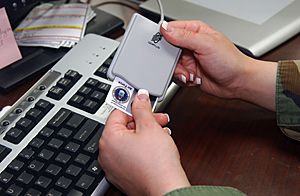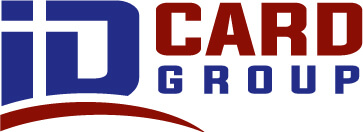PIV-I cards may well be the next generation of smart cards for identity verification.
According to smart card leader, HID Global, PIV-I cards are “A high-security credential that meets the stringent standards mandated by the U.S. government to increase the security of its facilities and technology.”
PIV-I use is quickly spreading beyond government circles into corporate America and may soon find its way into online identity protection as well.
What is PIV-I and Why Use It?
Personal Identity Verification (PIV) cards came about due to FIPS 201 (Federal Information Processing Standard Publication 201) standards. FIPS 201 is a United States federal government standard that specifies Personal Identity Verification (PIV) requirements for Federal employees and contractors.
PIV-I (Personal Identity Verification – Interoperable) evolved originally for use by short-term federal contractors who had frequent communications with the federal government. But the scope of use for PIV-I has since grown to include healthcare workers, first responders, and now corporate workers as a way to help corporations comply with regulatory issues such as Sarbanes-Oxley and Payment Card Industry Data Security Standards.
PIV-I card popularity as a smart card is based, in part, on its standards-based system, which allows organizations more options than a proprietary system would. More options not only mean more choices among card, reader, and software vendors – but also better prices due to vendor competition.
Making Headway into Corporate Circles
PIV-I cards are finding their way into the private sector. However, adopting PIV-I “is no trivial undertaking,” according to Frank Smith, chief technology officer at Booz Allen Hamiliton. The consulting firm began the shift to PIV-I two years ago. “It’s a fundamental change to how an organization deploys security,” adds Smith. For instance biometric fingerprint data is part of PIV-I, but with legal issues surrounding collection and the fact that not all employees are comfortable with the requirement, Booz Allen allows workers who do not directly serve government accounts to opt out of the biometric collection requirements.
Additionally, ID appearance and issuance processes have changed, and collectively add more time to the overall process. And government agencies can still decide whether to accept the PIV-I credentials or require their own, but as the kinks get worked out, Booz Allen is pleased with its progress and keeps an eye on the desired end result – a consolidation of logical and physical access credentials into one ID.
In Use with First Responders
Interoperability has long been a key issue in first-responder communications. Accessing and communicating data from across city, county and state jurisdictions to coordinate efforts in times of crisis is a known hurdle.
After September 11, FEMA started the effort to push an interoperable credential to firefighters, paramedics, police and other first responders.
The state of Virginia was one of the first to start issuing PIV-I, according to W. Duane Stafford, statewide credentialing coordinator for the Commonwealth of Virginia.
The Virginia ID contains a verified identity, listing of the cardholder’s specific skill set and biometrics that comply with the PIV-I standard. At the close of 2010, nearly 13,000 credentials had been issued and 39 handheld scanners purchased for on-scene validation, according to Stafford. And to keep costs in line, Virginia is only issuing the IDs to first responders who could be deployed across state lines, he adds.
It’s worked out so well, that Virginia has also been working with private industry, phone, gas and electric companies, so they could possibly use a PIV-I credential as well when responding to scenes.
Health Care is Showing Interest in PIV-I
According to Gary Moore, chief architect for global governments at Entrust, health care is taking a hard look at PIV-I as well.
Moore adds the National Institute of Health is using PIV-I credentials for login to PubMed, a free resource that is developed and maintained by the National Center for Biotechnology Information (NCBI), at the U.S. National Library of Medicine (NLM), located at the National Institutes of Health (NIH). PubMed is made up of more than 20 million citations for biomedical literature from MEDLINE, life science journals and online books.
Is Consumer Use Next?
There is speculation that PIV-I is a strong contender for consumer use in online identity protection and transaction security. Exactly how this will work is still being determined, but many point to PIV-I’s standards-based security credential system as a natural solution.
Even though PIV cards are highly technical and secure, they can be used with nearly any standard ID lanyard, badge reel or strap clip. To protect your confidential data, we recommend using a shielded badge holder made specifically for PIV cards.
Questions?
If you need help choosing the best ID security products and PIV-I card accessories for your organization’s needs, call our ID experts at 877-868-0012 or [email protected]. We’ll make it easy for you.
ID Card Group offers a price match guarantee, provides free shipping on orders over $100, and accepts purchase orders.
Source: SecureID News: Will PIV-I be the identity standard of the future?




